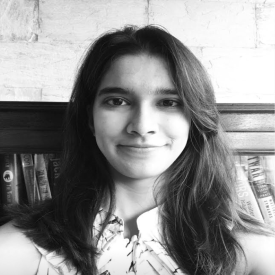India’s Women’s Reservation Act: A big win for governance and beyond
Amidst debates about the recently passed women's reservation act and whether it will reduce gender disparities on the ground, Wattal and Gopalan summarise evidence from a number of randomised evaluati...
-
 Akshara Gopalan
Akshara Gopalan  Urvashi Wattal
Urvashi Wattal  15 December, 2023
15 December, 2023
- Perspectives
The distributional consequences of political reservations
This article identifies and attempts to fill in the gaps in understanding the effects of reservations for Scheduled Castes (SCs) in Panchayats. Using data from a state-wide census, multiple administra...
-
 Chinmaya Kumar
Chinmaya Kumar  M.R. Sharan
M.R. Sharan  28 November, 2023
28 November, 2023
- Articles
The complexity of female empowerment interventions
In the final post of I4I’s month-long campaign to mark International Women’s Day 2023, Siwan Anderson unpacks the complex dimensions and interactions between measures of female empowerment. She hi...
-
 Siwan Anderson
Siwan Anderson  30 March, 2023
30 March, 2023
- Perspectives
Convincing the Mummy-ji: Improving mother-in-law approval of family planning in India
In the first of two articles about women’s fertility and family planning, Anukriti et al. discuss the influence that mothers-in-law have on women’s access to family planning services, with them on...
-
 S Anukriti
S Anukriti  Catalina Herrera-Almanza
Catalina Herrera-Almanza  Mahesh Karra
Mahesh Karra  Rocío Valdebenito
Rocío Valdebenito  18 August, 2023
18 August, 2023
- Articles
An overview of (elder) son preference in India
In the fourth article in the Ideas@IPF2023 series, Seema Jayachandran presents key information about son preference and how it manifests as gaps in health and updates these outcomes with NFHS-5 data. ...
-
 Seema Jayachandran
Seema Jayachandran  13 July, 2023
13 July, 2023
- Perspectives
How class and caste influence school choice
Families' socioeconomic status impacts how parents make decisions regarding their children's education. Taking into account the interplay of caste and class, this paper finds that when families are to...
- Articles
Hindu-Muslim fertility differentials in India: An update
Building on past research, Saswata Ghosh and Pallabi Das estimate the state- and district-level fertility differentials between Hindus and Muslims using data from the latest round of the NFHS. They sh...
-
 Pallabi Das
Pallabi Das  Saswata Ghosh
Saswata Ghosh  18 April, 2023
18 April, 2023
- Articles
The complexity of female empowerment interventions
In the final post of I4I’s month-long campaign to mark International Women’s Day 2023, Siwan Anderson unpacks the complex dimensions and interactions between measures of female empowerment. She hi...
-
 Siwan Anderson
Siwan Anderson  30 March, 2023
30 March, 2023
- Perspectives
Left behind or left ahead? Implications of male migration on female political engagement
In the eleventh post of I4I’s month-long campaign to mark International Women’s Day 2023, using data from both the IHDS and a survey conducted in rural Bihar, Rithika Kumar finds that migration-dr...
-
 Rithika Kumar
Rithika Kumar  27 March, 2023
27 March, 2023
- Articles
The effect of domestic violence on cardiovascular risk
In the tenth post of I4I’s month-long campaign to mark International Women’s Day 2023, Seetha Menon investigates the causal relationship between domestic violence and increased risk of cardiovascu...
-
 Seetha Menon
Seetha Menon  24 March, 2023
24 March, 2023
- Articles
The impact of religious violence and social conflict on women’s age of marriage
In the ninth post of I4I’s month-long campaign to mark International Women’s Day 2023, Debnath et al. explore the effects of Hindu-Muslim riots on decisions around women's marriage. They find that...
-
 Sisir Debnath
Sisir Debnath  Sourabh Paul
Sourabh Paul  Asad Tariq
Asad Tariq  22 March, 2023
22 March, 2023
- Articles
The empowering effects of employment on married women
In the seventh post of I4I’s month-long campaign to mark International Women’s Day 2023, Madeline McKelway and Julia Redstone outline the findings of a study investigating the empowerment effects ...
-
 Madeline McKelway
Madeline McKelway  Julia Redstone
Julia Redstone  17 March, 2023
17 March, 2023
- Articles
Inching towards college: Exploring gender and mobility in India
In the sixth post of I4I’s month-long campaign to mark International Women’s Day 2023, Vijaya at al. investigate mobility constraints among college-going students in Jalandhar. They find that whil...
-
 Ravneet Bains
Ravneet Bains  Naureen Bhullar
Naureen Bhullar  Ramya Vijaya
Ramya Vijaya  16 March, 2023
16 March, 2023
- Notes from the Field
Living with the in-laws: Effect on women’s employment in India
In the fourth post of I4I’s month-long campaign to mark International Women’s Day 2023, Rajshri Jayaraman considers the negative correlation between high rates of co-residence with in-laws and low...
-
 Rajshri Jayaraman
Rajshri Jayaraman  13 March, 2023
13 March, 2023
- Articles
Women’s Month 2023: An International Women’s Day series
Throughout the month of March, I4I will be hosting the latest evidence and perspectives to mark International Women’s Day 2023. Follow this campaign across platforms and join the conversation using ...
-
 Nikita Mujumdar
Nikita Mujumdar  Ishita Trivedi
Ishita Trivedi  08 March, 2023
08 March, 2023
- Symposium
Twitter feed
Tweets by Ideas4IndiaMost Popular Social Identity Posts
A division of labourers: Caste identity and efficiency in India
Castes in India are closely associated with certain occupations and determine the jobs done by millions. This study uses a new dataset to show that a large proportion of workers still work in their ca...
 Guilhem Cassan
Guilhem Cassan  Daniel Keniston
Daniel Keniston  Tatjana Kleineberg
Tatjana Kleineberg  18 November, 2022
18 November, 2022
- Articles
Sex ratios and religion in India and South Asia
In South Asia, low child sex ratios are increasingly an isolated Indian phenomenon. Within India, child sex ratios are ‘normal’ among Christians and Muslims but much lower among Hindus, Sikhs, and...
 Swati Narayan
Swati Narayan  03 April, 2019
03 April, 2019
- Articles
Hindu-Muslim fertility differentials in India: An update
Building on past research, Saswata Ghosh and Pallabi Das estimate the state- and district-level fertility differentials between Hindus and Muslims using data from the latest round of the NFHS. They sh...
 Pallabi Das
Pallabi Das  Saswata Ghosh
Saswata Ghosh  18 April, 2023
18 April, 2023
- Articles





 15 March, 2024
15 March, 2024






